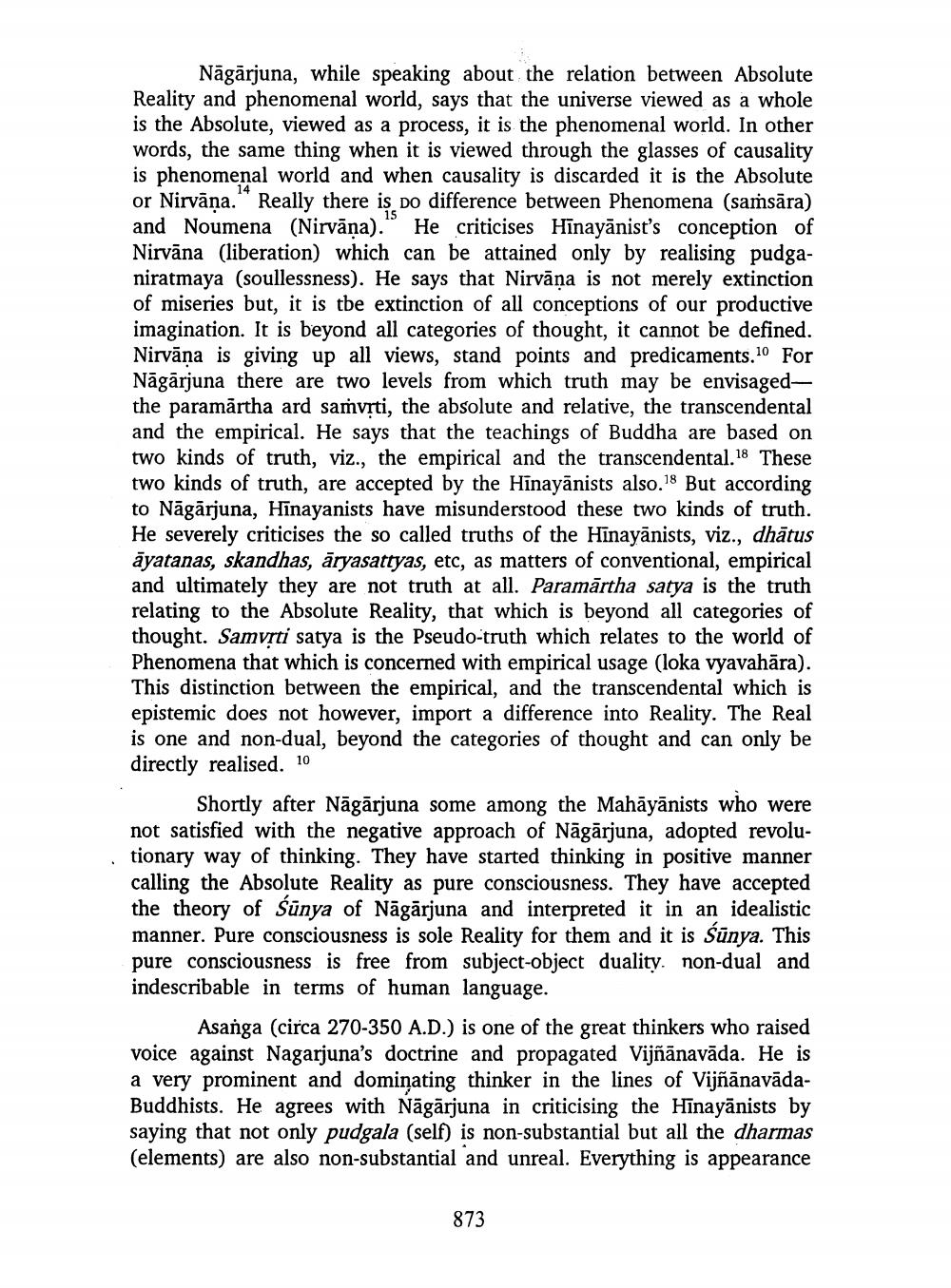________________
Nāgārjuna, while speaking about the relation between Absolute Reality and phenomenal world, says that the universe viewed as a whole is the Absolute, viewed as a process, it is the phenomenal world. In other words, the same thing when it is viewed through the glasses of causality is phenomenal world and when causality is discarded it is the Absolute or Nirvāna." Really there is no difference between Phenomena (samsāra) and Noumena (Nirvāna)." He criticises Hīnayānist's conception of Nirvana (liberation) which can be attained only by realising pudganiratmaya (soullessness). He says that Nirvāṇa is not merely extinction of miseries but, it is tbe extinction of all conceptions of our productive imagination. It is beyond all categories of thought, it cannot be defined. Nirvāna is giving up all views, stand points and predicaments,10 For Nāgārjuna there are two levels from which truth may be envisagedthe paramārtha ard samvrti, the absolute and relative, the transcendental and the empirical. He says that the teachings of Buddha are based on two kinds of truth, viz., the empirical and the transcendental.18 These two kinds of truth, are accepted by the Hinayānists also.18 But according to Nāgārjuna, Hīnayanists have misunderstood these two kinds of truth. He severely criticises the so called truths of the Hinayānists, viz., dhātus āyatanas, skandhas, āryasattyas, etc, as matters of conventional, empirical and ultimately they are not truth at all. Paramārtha satya is the truth relating to the Absolute Reality, that which is beyond all categories of thought. Samvrti satya is the Pseudo-truth which relates to the world of Phenomena that which is concerned with empirical usage (loka vyavahāra). This distinction between the empirical, and the transcendental which is epistemic does not however, import a difference into Reality. The Real is one and non-dual, beyond the categories of thought and can only be directly realised. 10
Shortly after Nāgārjuna some among the Mahāyānists who were not satisfied with the negative approach of Nāgārjuna, adopted revolutionary way of thinking. They have started thinking in positive manner calling the Absolute Reality as pure consciousness. They have accepted the theory of Sūnya of Nāgārjuna and interpreted it in an idealistic manner. Pure consciousness is sole Reality for them and it is Sūnya. This pure consciousness is free from subject-object duality. non-dual and indescribable in terms of human language.
Asanga (circa 270-350 A.D.) is one of the great thinkers who raised voice against Nagarjuna's doctrine and propagated Vijñānavāda. He is a very prominent and dominating thinker in the lines of VijñānavādaBuddhists. He agrees with Nāgārjuna in criticising the Hinayānists by saying that not only pudgala (self) is non-substantial but all the dharmas (elements) are also non-substantial and unreal. Everything is appearance
873




